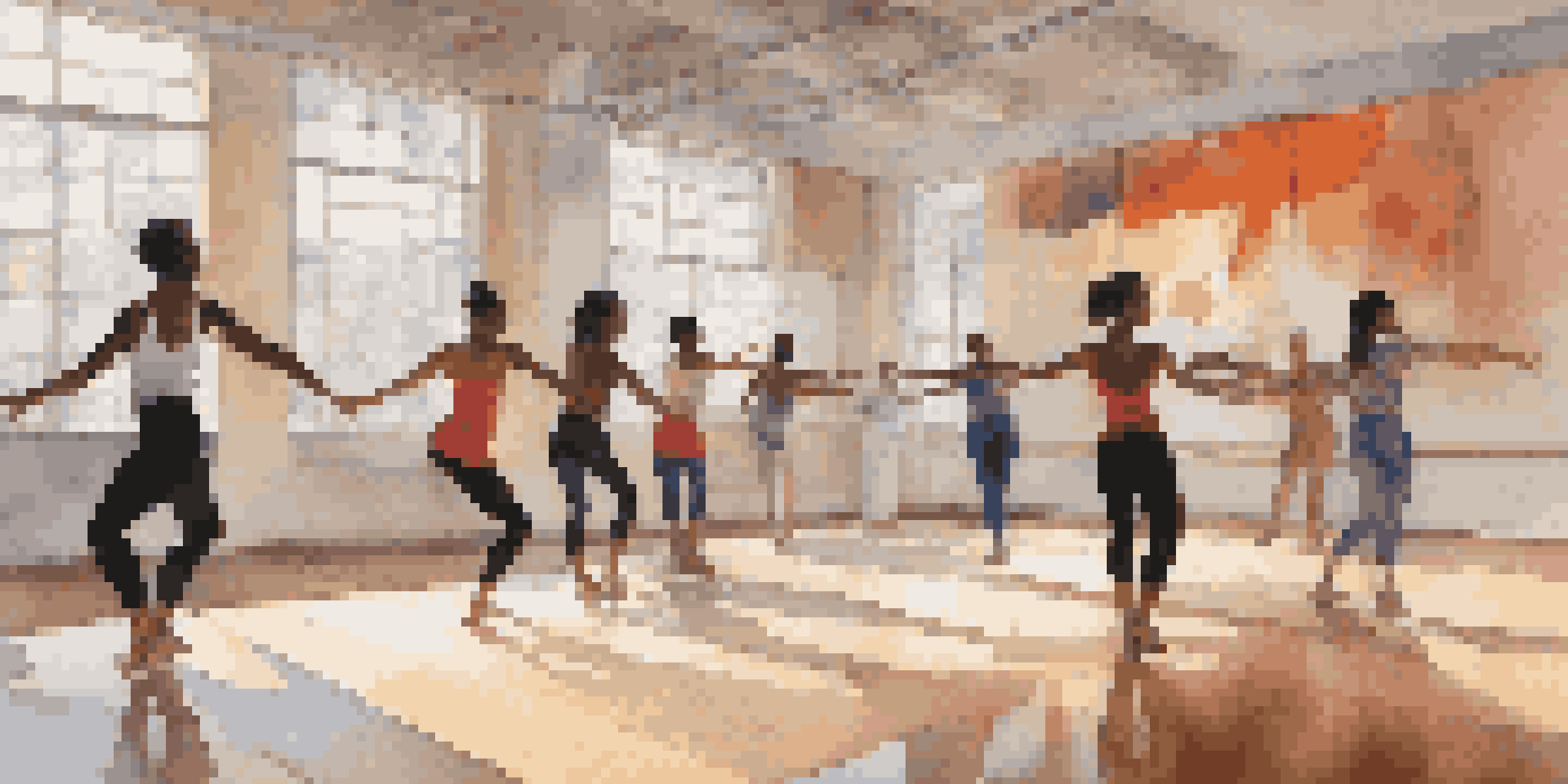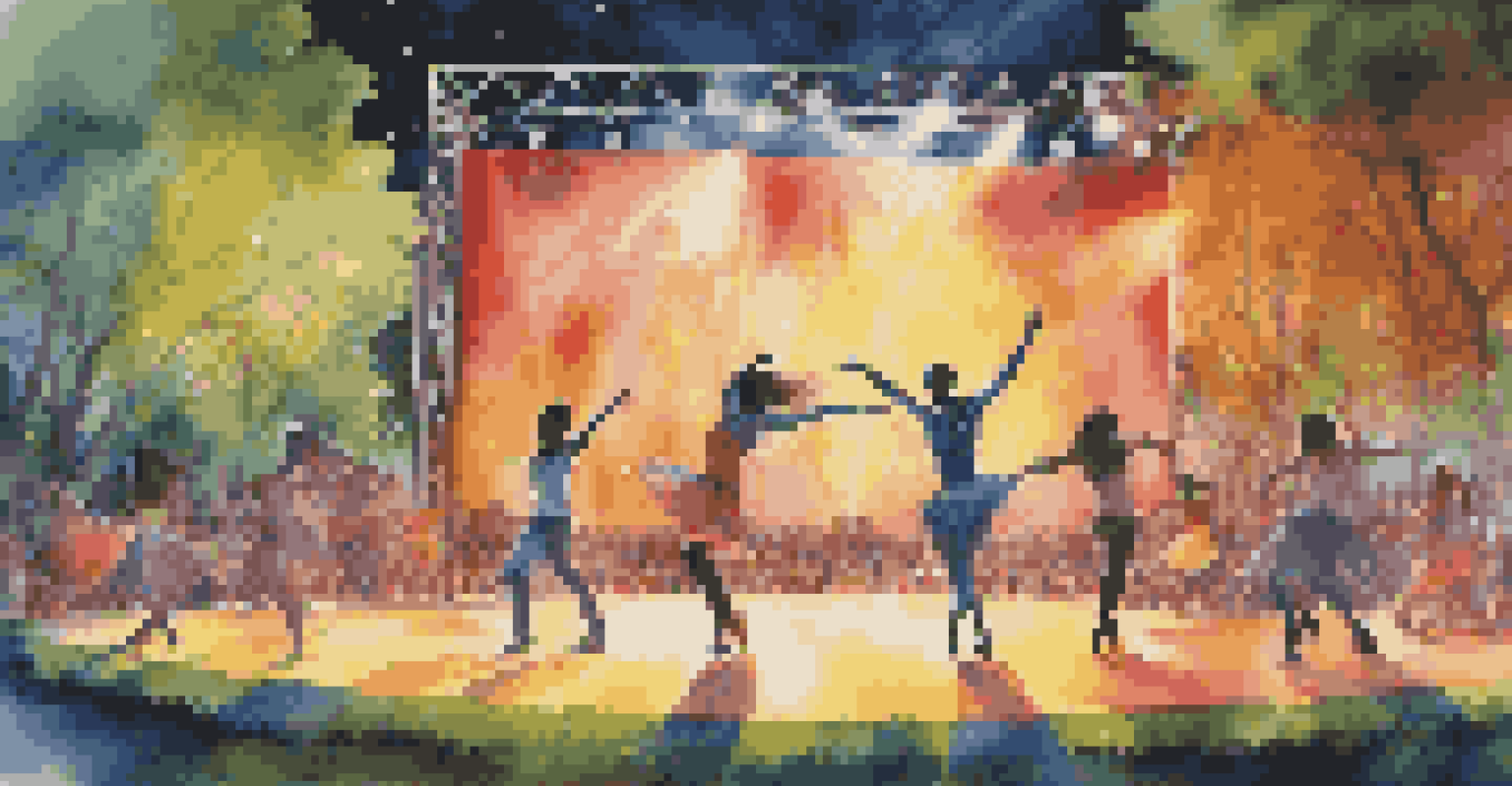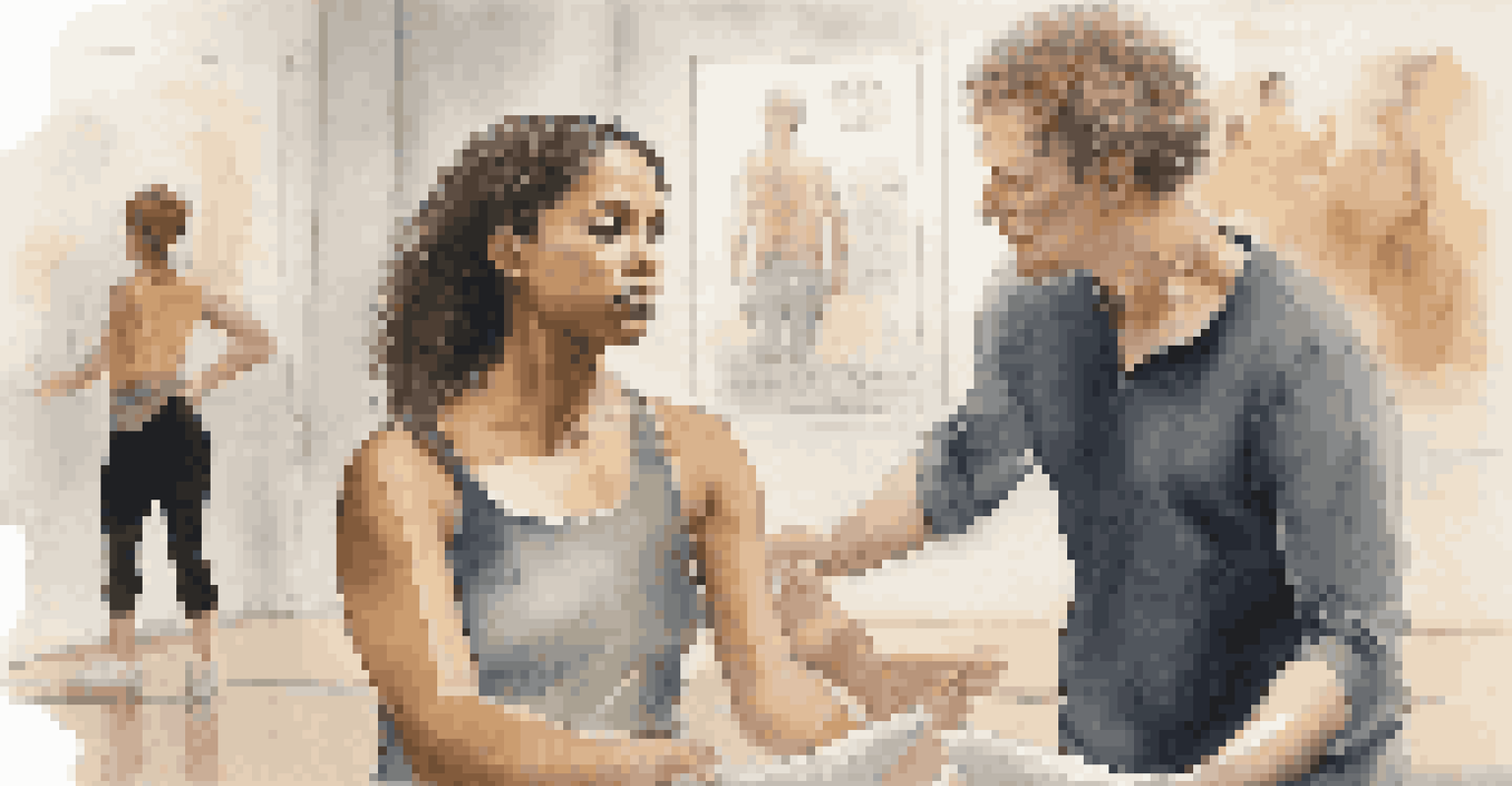Collaborative Practices in Dance and Performance Art Creation

Understanding Collaborative Practices in Dance
Collaboration in dance involves artists working together to create a unified piece. This can include choreographers, dancers, musicians, and visual artists, each bringing their unique perspective. The synergy often leads to innovative movements and compelling narratives that might not emerge in solo work.
Art is not a thing, it is a way.
For instance, a choreographer might collaborate with a musician to develop a piece that responds dynamically to the music. This interplay can create a more immersive experience for the audience. It is this blending of talents and skills that defines the essence of collaborative practice in dance.
Moreover, collaboration fosters a sense of community among artists. It encourages sharing ideas and constructive feedback, ultimately enriching the creative process. When artists come together, they often push each other’s boundaries, leading to more profound artistic expressions.
The Role of Communication in Collaborative Creation
Effective communication is the backbone of successful collaborative practices in dance and performance art. Artists must articulate their ideas clearly and listen to one another to build a cohesive vision. This creates an environment where everyone feels valued and heard, which is crucial for creativity.

For example, during rehearsals, dancers might share their interpretations of a choreographer’s vision, leading to adjustments that enhance the overall performance. This dialogue not only refines the work but also builds trust among collaborators. Trust is essential, as it allows artists to take risks and explore new concepts.
Collaboration Enhances Creativity
Working together allows artists to blend diverse talents and create innovative performances that push artistic boundaries.
In addition, open communication helps mitigate conflicts that may arise during the creative process. By discussing challenges openly, collaborators can find solutions and maintain a positive atmosphere. This collaborative spirit can lead to groundbreaking performances that resonate deeply with audiences.
Benefits of Collaborative Practices in Performance Art
Collaborative practices in performance art yield numerous benefits, enhancing both the creative process and the final product. One major advantage is the fusion of diverse artistic styles, which can lead to unexpected and exciting outcomes. This blending can challenge traditional forms and push the boundaries of what performance art can be.
The best way to predict the future is to create it.
For instance, a visual artist might integrate multimedia elements into a dance performance, enriching the visual experience for the audience. Such innovations can captivate viewers and provoke thought, showcasing the power of collaboration. The result is often a more engaging and memorable performance.
Furthermore, collaboration allows artists to share resources and expertise, which can be particularly beneficial in resource-limited environments. By pooling their talents and tools, they can create work that might be impossible to achieve individually. This sense of shared ownership often leads to a stronger connection to the work itself.
Diversity and Inclusion in Collaborative Dance Projects
Diversity and inclusion play a pivotal role in enhancing collaborative practices in dance and performance art. When artists from different backgrounds come together, they bring varied perspectives and experiences, enriching the creative process. This variety can lead to performances that reflect a broader range of human experiences.
For example, a collaborative project involving dancers from various cultural backgrounds may incorporate elements from each culture's dance traditions. This not only diversifies the choreography but also fosters cross-cultural understanding among artists and audiences alike. Such inclusivity can resonate powerfully with viewers, creating a more meaningful connection.
Communication Builds Trust
Effective dialogue among collaborators fosters a supportive environment, essential for creativity and risk-taking.
Moreover, prioritizing diversity in collaborative practices ensures that marginalized voices are heard and represented. This can empower underrepresented artists, providing them a platform to share their stories. The result is a richer tapestry of narratives within the performance art landscape.
Navigating Challenges in Collaborative Creation
While collaboration can lead to extraordinary outcomes, it is not without its challenges. Differences in artistic vision, communication styles, and work ethics can create friction among collaborators. Recognizing and addressing these differences early on is crucial for maintaining a productive creative environment.
For instance, a choreographer may have a specific aesthetic in mind, while dancers might interpret it differently based on their experiences. Open discussions about these interpretations can help clarify expectations and align everyone’s vision. This willingness to engage in dialogue can prevent misunderstandings and foster a more harmonious collaboration.
Additionally, time constraints can pose challenges in collaborative projects. Balancing schedules and finding suitable times for all artists can be tricky. However, by establishing clear timelines and being flexible, collaborators can work together effectively, ensuring that the creative process remains enjoyable and productive.
Technological Innovations in Collaborative Dance Creation
In recent years, technology has significantly impacted collaborative practices in dance and performance art. Digital tools allow artists to connect and create across distances, breaking geographical barriers. This opens up new avenues for collaboration, enabling artists from different parts of the world to co-create in real-time.
For example, video conferencing platforms can facilitate rehearsals and brainstorming sessions, allowing for seamless communication. Additionally, software for editing and sharing choreography can streamline the creative process. Artists can record their movements, share them with collaborators, and receive feedback without the need for physical meetings.
Diversity Enriches Performances
Incorporating varied perspectives and experiences leads to richer narratives and more meaningful connections with audiences.
Moreover, technology has also introduced innovative ways to enhance performances. Interactive installations and augmented reality can create immersive experiences that captivate audiences. By embracing these technological advancements, artists can push the envelope of creativity and redefine what collaborative performance art can entail.
Celebrating Successful Collaborations in Dance
Celebrating successful collaborations in dance and performance art not only acknowledges the hard work of artists but also inspires future projects. High-profile collaborations often garner attention and highlight the power of teamwork in the arts. These successes can motivate other artists to explore collaborative opportunities.
Take, for example, the collaboration between well-known choreographers and visual artists, which often results in groundbreaking performances. These projects can challenge conventional norms, showcasing the beauty of interdisciplinary work. Such visibility can encourage emerging artists to think outside the box and consider how they can integrate different art forms.

Furthermore, sharing stories of successful collaborations fosters a sense of community within the arts. When artists showcase their collaborative journeys—complete with challenges and triumphs—they create a narrative that others can relate to. This communal spirit can lead to more partnerships and ultimately enrich the landscape of dance and performance art.